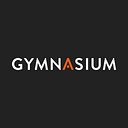The Good, the Ad, and the Ugly: the Pros and Cons of Ad Blockers
What Are Ad Blockers?
Ad-blocking software is known for its ability to automatically remove unwanted online advertisements, including, but not limited to, web banners, embedded audio and video, and pop-up windows. In most cases, this is achieved by either interrupting the connection between content providers and third-party ad networks or blocking tracking scripts that follow user web activity. This type of content-filtering software debuted in the early 2000s after the rise of the Internet, and in the years since, it has steadily made its way into the mainstream.
Why Do People Want to Block Ads?
As of 2016, over 70 million people actively use ad blockers on their desktop computers, laptops, smartphones, and tablets in the United States alone. The majority are simply fed up with the high amount of annoying advertisements that disrupt their daily browsing experience. A recent study revealed that the most hated types of advertising are full-page web pop-ups, autoplay audio and video Internet ads, and online video pre-rolls, while the most favored formats are unobtrusive kinds like billboards and magazine ads. This reaffirms what most already know — no one likes to be interrupted.
Many are also attempting to escape ads that increase the load time of their chosen content, decrease the battery life of their device, and increase their data and bandwidth usage, while others are hoping to avoid malicious ads containing malware, phishing scams, or viruses. There are privacy concerns as well, as the vast majority of ad networks and tracking systems collect information about user behavior. In addition to removing virus-laden pop-ups, ad blockers make it easy to browse anonymously by cutting off these systems.
What Are the Downsides of Ad Blocking?
While it’s easy to see the appeal of ad blockers, the software has nearly as many drawbacks as it does advantages. Despite its name, ad blockers often end up blocking more than just advertisements. For example, ad-blocking software automatically blocks Intercom, the in-app messaging tool that we use on our ad-free platform to provide user support and deliver important notifications. The only way ad-blocking users can access this part of our website is if they whitelist it by adding our URL to their personal inventory of acceptable pages. This content-blocking issue is relatively common; many users of Adblock Plus, the most popular ad-blocking software on the market with over 500 million downloads worldwide, have complained that the service has inadvertently cut off their access to YouTube in addition to other desired content that is unrelated to advertising.
Ad-blocking software also has a direct effect on websites that host ads, as well as all who earn their livelihoods from the online content industry, including columnists, content creators, editors, and journalists. Many of the pages that we visit daily are only free because of ad revenue, and without it, they will eventually be forced to either shut down or begin charging for access to content. In an attempt to compromise with these websites, Adblock Plus recently debuted an Acceptable Ads Program which allows publishers to apply to have their ads pre-approved and automatically whitelisted for every Adblock Plus user. In order to qualify, advertisements must meet a list of criteria to be deemed non-intrusive — they must be clearly marked as ads; they must cover less than a quarter of the screen; and they cannot automatically play audio or video — among others.
This initiative is controversial, however, due to its selectivity (its overall acceptance rate is just 9.5 percent) and its exception that larger companies with over 10 million ad impressions per month, such as Google, Microsoft, and Amazon, can pay an undisclosed fee to have their ads reinstated. Smaller websites are forced to beg their readers to manually whitelist their page, although research indicates that this tactic is not effective enough to change the behavior of most ad-blocking users. After running over 500 appeals on half as many websites, researchers found that only one-third of all visitors made the effort to utilize the whitelist. Appeals for donations are similarly unpopular: just three out of one million users obliged when given the option.
How Can Advertisers Adapt?
It has been estimated that the use of ad-blockers will cost advertisers 35 billion dollars by 2020, if it continues at its current rate. Some have tried to respond to this epidemic by offering ad-free subscription plans for a small fee, but only a fraction of users have been willing to pay up. Others install ad blocker blockers that claim to provide a number of solutions, including analytics to measure ad blocking and “ad recovery” to restore advertisements and recapture lost revenue. Unsurprisingly, this attempt at subverting the efforts of customers only drives them further away.
The best long-term strategy is to solve the underlying problem and focus on creating a better ad experience for dissatisfied users. In this light, many companies have started investing in online native advertising — ads that are designed to blend in with the content on any given platform. Popularized by BuzzFeed, online native ads are the modern version of product placement, and, when done right, they are entirely non-intrusive. Most prefer native advertising, and research has shown that it has both twice as much visual focus and a 18 percent higher lift in purchase intent than traditional banner ads. As native ads are also virtually undetectable to ad blockers, this may be the simplest and most effective way for both advertisers and consumers to overcome block shock. By changing the way they market their products and services, advertisers can ensure a higher-quality user experience and eliminate much of the concern and frustration that leads to the use of ad-blocking software in the first place.
Thanks to Milo Goodman for his contribution to this story.
